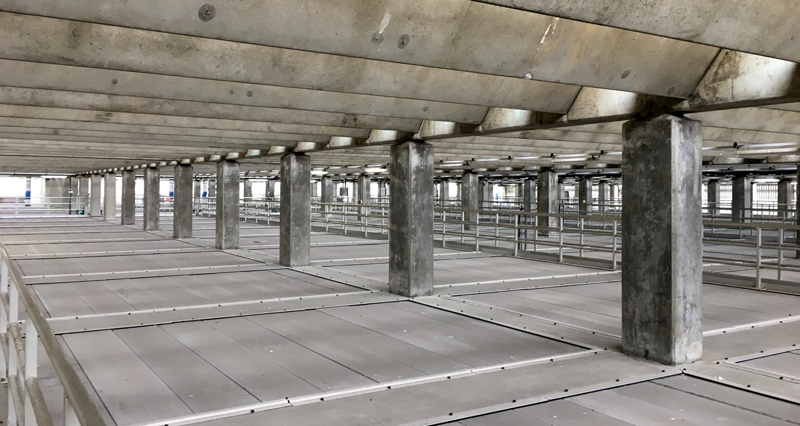Sedimentation tanks seismic upgrade
Learn about seismic upgrades to the sedimentation tanks at West Point to make the plant more resilient to earthquakes.
Project update
Get the latest updates on West Point.
Project description

West Point is undergoing upgrades to make the facility more resilient in the event of an earthquake. We are improving large, enclosed sedimentation tanks that play a key role in the wastewater treatment process. A seismic evaluation performed in 2010 showed that the roof above the tanks did not meet minimum seismic safety standards.
To improve resiliency of the facility, this project included:
- Removing a series of large, concrete beams above the tanks
- Improving the odor control system
- Increasing the wall thickness between the 2 tanks
- Upgrading the walkways on the tank walls so staff can access the facility safely and efficiently
These tanks not only clean wastewater in order to protect public health but also allow King County to recycle valuable resources for the Puget Sound region. The sedimentation tanks are where about 60 percent of organic solids in the flows from our homes, schools and businesses are removed. Wastewater sits in sedimentation tanks for about six hours so that heavy materials sink and light materials float. These organic materials are then skimmed from the top and scraped off the bottoms of the tanks and further treated, recycled and used in products such as Loop, a nutrient-rich biosolids product sold to farms and forests as an alternative to chemical fertilizers.
Located in Discovery Park, West Point cleans wastewater from homes, schools and businesses in a large area that includes Seattle, Shoreline, north Lake Washington, north King County and south Snohomish County.
Project schedule
Construction on the project began in 2021 and has been partially completed.
Community outreach
We will provide ongoing updates here as the project progresses.
Learn more
In 2017, King County began an alternatives analysis process to identify the best way to upgrade the sedimentation tanks to meet seismic standards. Several alternatives were studied and considered, including options to upgrade the existing framing or removing the roof altogether. Following alternatives analysis, the County determined the best approach was to remove the roof. Removing the roof reduced both the overall project cost and upgrades required for the facility. The sedimentation tanks have been operating continuously since 1966. The project will also include an upgrade of the existing odor control system, which was installed in the late 1990s.

 Translate
Translate